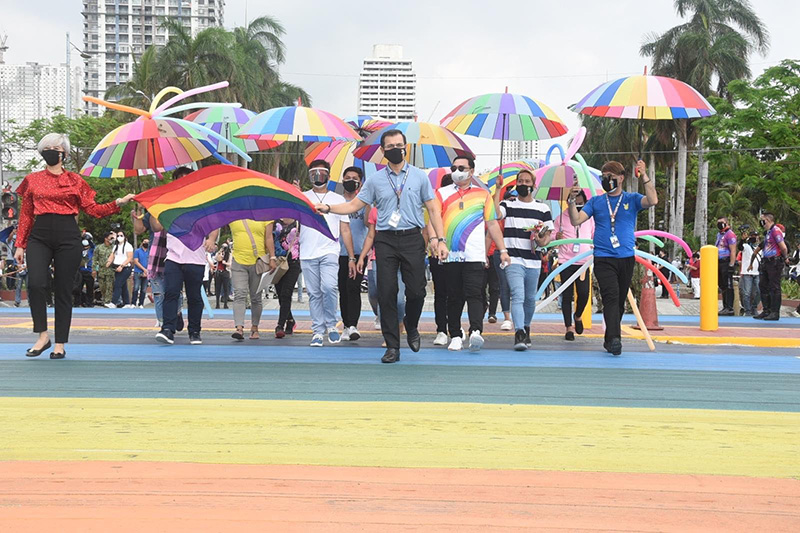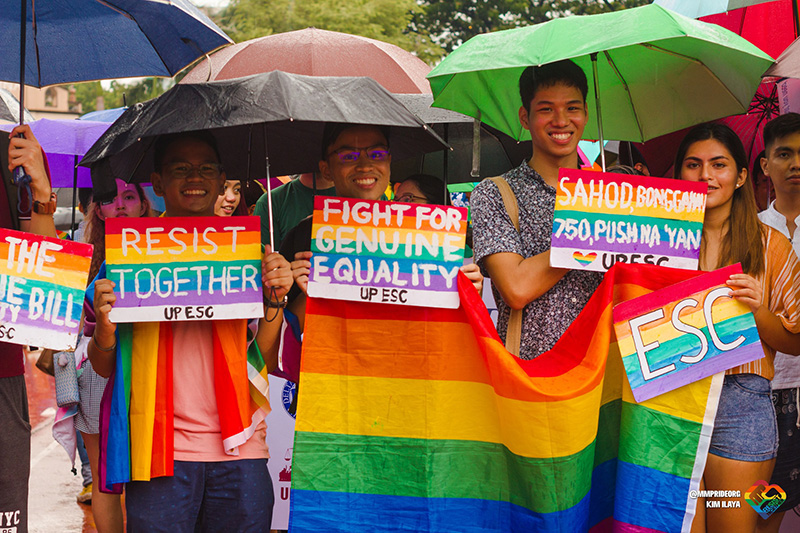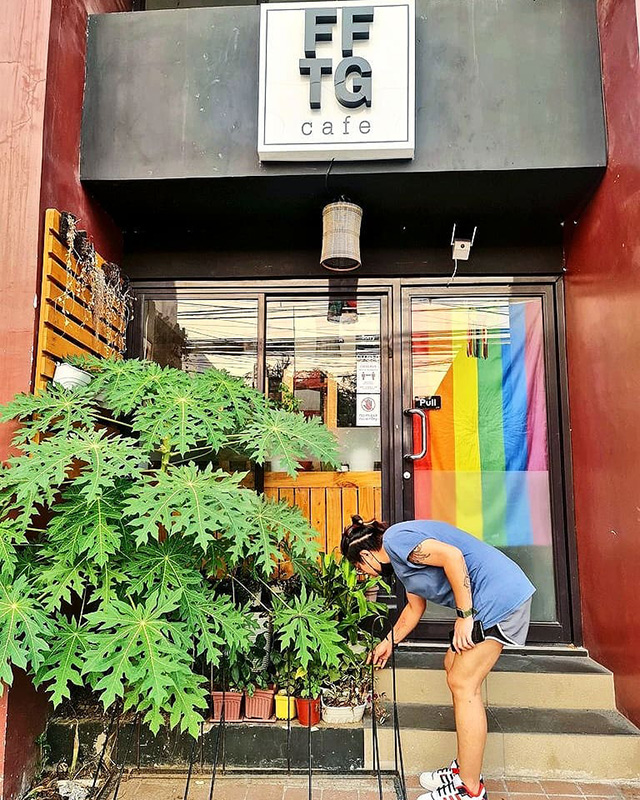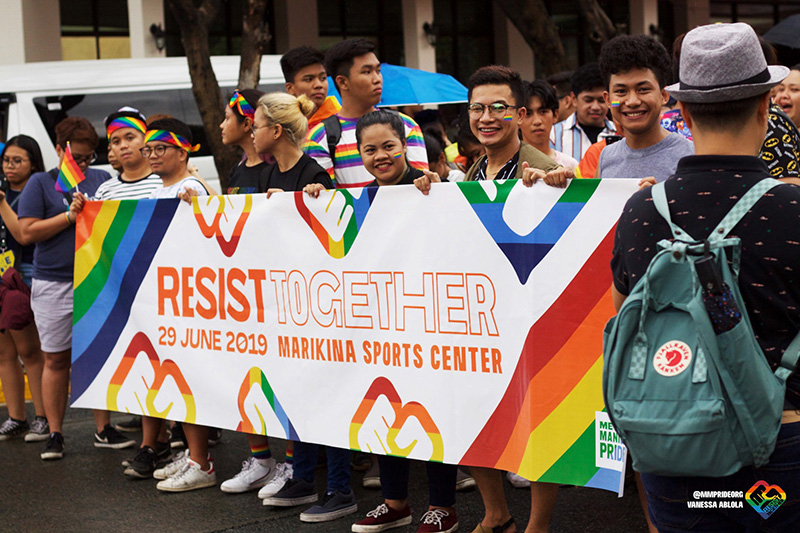There is no pride in queer tokenism, or why allyship should go beyond Pride month campaigns and rainbow logos
Growing up, I rarely saw LGBTQI+ people on my television screen. Although there were shows like Glee where queer people and storylines were part of its regular programming, these shows were few and far between.
So when I first watched Heartstopper, I found myself overwhelmed with joy and excitement watching a show that so accurately depicted what it meant to be young and queer in an otherwise prejudiced society—a show I wish I had had when I was coming to terms with my own queerness.
Watching Heartstopper was like a breath of fresh air. Its storylines not only acknowledge the continued struggles of LGBTQI+ youth all over the world, but the show also makes room for its diverse queer characters to flourish and live happy lives. It helped that Heartstopper isn’t just a show for LGBTQI+ people but a series with LGBTQI+ people at its helm as most of its cast and crew are members of the queer community.

But while Heartstopper has gained substantial success and has since been renewed for a second and third season, Netflix was recently reported to have laid off several of its employees, including those working primarily on content for the LGBTQI+ community as well as people of color.
This news was disappointing and frustrating. Heartstopper felt like a milestone show—a shift in the LGBTQI+ narratives in the media—and I wanted more shows like it! But with fewer people working on LGBTQI+ content, I couldn’t help but wonder and worry if Heartstopper would be the last of its kind on Netflix.
Allyship goes beyond launching campaigns during Pride Month or integrating the rainbow into your logos. Genuine allyship entails changes in the way companies treat, manage, and make decisions about LGBTQI+ employees in the company.
The false promise of queer tokenism
Honestly, I wasn’t surprised at the news. In fact, it felt all too familiar.
LGBTQI+ activists and scholars have long warned about queer tokenism, or the activities and projects that companies or institutions engage in to present themselves as inclusive and diverse spaces for the LGBTQI+ community. These initiatives are oftentimes symbolic and performative especially when we consider the continued discrimination against the LGBTQI+ community in our society.
We don’t need to look too far either. Our government has treated the Filipino LGBTQI+ community quite similarly.
In 2020, the City of Manila passed its own anti-discrimination ordinance which institutes protection from discrimination based on an individual’s sexual orientation, gender identity, and expression. As the capital of an otherwise conservative and largely religious country, the passage of such a legislation is surely a step in the right direction for LGBTQI+ rights in the city. In celebration, former Manila Mayor Isko Moreno unveiled a newly painted rainbow-themed crosswalk across Roxas Boulevard—an act that was lauded for its message of inclusion and representation.

However, the City of Manila has not truly acted wholly in support of the LGBTQI+ community and their calls for equal rights. Months prior to the passage of its anti-discrimination ordinance, Manila City Police illegally arrested and detained LGBTQI+ rights activists who were protesting the Anti-Terror Law (then a bill). Initially, the police did not articulate the charges upon arrest but they later cited violations of social distancing guidelines, which the activists said they have complied with.

And during the recently concluded campaign season, Moreno jokingly offered his son for “bookings”—or paid sex—to his LGBTQI+ supporters, which reinforces this harmful misconception about the hypersexuality of LGBTQI+ people.
These incidences call into question the authenticity of these public initiatives for diversity and inclusion. While increased visibility in public spaces and major platforms are much appreciated, how can we reconcile these with the LGBTQI+ community’s daily experiences of exclusion, violence, and discrimination that these spaces enable and perpetuate?
And that’s the (false) promise of queer tokenism.
We are made to believe that our collective support and resources go to companies and institutions that support the LGBTQI+ community when that couldn’t be further from the truth. The reality is that these queer-made shows and brightly colored rainbow crosswalks are nothing to these institutions but ways to take advantage of the LGBTQI+ community’s genuine need for representation and inclusion. If anything, these public displays of diversity mask the lack of genuine representation within these companies that sell us Pride-themed merchandise.
While increased visibility in public spaces and major platforms are much appreciated, how can we reconcile these with the LGBTQI+ community’s daily experiences of exclusion, violence, and discrimination that these spaces enable and perpetuate?
The trap of queer tokenism
In a prejudiced and discriminatory society where LGBTQI+ representation remains scarce, wouldn’t we want to support and spend our resources on campaigns and projects that support the LGBTQI+ community? Thus, we are all left in this dilemma—a paradox of wanting to celebrate shows like Heartstopper that is genuinely made for and by the LGBTQI+ community and not wanting to support the streaming platform that has failed to institutionalize authentic LGBTQI+ inclusion.
Queer tokenism is a trap that makes it difficult for the LGBTQI+ community to attain authentic changes in social systems and institutions, especially since these initiatives are oftentimes regarded in place of genuine systemic change. This is especially important in the Philippines, where the struggle for LGBTQI+ rights continues.
Although the Philippines is generally regarded as tolerant of the LGBTQI+ community, the country remains largely prejudiced and discriminatory towards the LGBTQI+ community. In the past few years alone, we have seen Filipinos expelled from schools and refused employment for being LGBTQI+. We’ve also witnessed the violence toward and murders of several LGBTQI+ Filipinos, such as Jennifer Laude and Khay Abdulgajir.

When Congress concluded its session last week, the SOGIE Equality Bill remained unpassed. When the 19th Congress begins this July, this will be the 21st year of the anti-discrimination bill in the Congress’ agenda. In its absence, several local anti-discrimination ordinances have been passed. While the passage of local ordinances are milestones in our activism for LGBTQI+ rights in the country, the existing ordinances aren’t enough to provide protection and support for Filipinos all over the country.
Pride is a protest
Every year, LGBTQI+ communities all over the world dedicate June as Pride Month. Our celebrations during Pride serve as both a remembrance and a vessel to further propel our calls for LGBTQI+ rights. As we enter another month full of activities made for and by the LGBTQI+ community, it’s important that we all (re)turn to LGBTQI+ activism, which is at the heart and soul of Pride.

After all, pride began as a protest—a fierce resistance against police brutality and policing by LGBTQI+, particularly trans, men of color in the Stonewall Riots back in 1969. Our history isn’t too different as our local pride marches have not been without calls for socio-political and cultural change. In fact, the first Pride march in the country protested the rise in taxes that would substantially affect the parlorista gays and other middle-class workers.
Pride began as a protest.
Of course, there is no one way to be an activist.
We can continue streaming Heartstopper and other LGBTQI+ themed shows that are made by and for the LGBTQI+ community as the views are undeniable evidence for these companies to further invest in more grounded LGBTQI+ stories. Similarly, we can support local queer-owned businesses. For instance, Food For the Gays is an LGBTQI+ owned café in Quezon City that promotes safe spaces for LGBTQI+ lives while offering delicious food and coffee to its patrons. These LGBTQI+ made and led initiatives genuinely deserve our support and resources not only during Pride Month but all year round.

But individual acts of support and resistance cannot stand alone. Our activism for LGBTQI+ rights must work hand in hand with collective action that can be directed toward projects, initiatives, and organizations that genuinely support LGBTQI+ advocacies, such as anti-discrimination, LGBTQI+ health, and institutional representation.
Several local community-based organizations have been at forefront of such LGBTQI+ activism. Some of these organizations include TLF Share (LGBTQI+ health), PANTAY (anti-discrimination), and HASH (community-based HIV services), whose year-round programs and advocacies for the LGBTQI+ community could benefit from our participation and support.
Just as important, brands and institutions need to do better especially since they’re at the forefront of queer tokenism. Allyship goes beyond launching campaigns during Pride Month or integrating the rainbow into your logos. Genuine allyship entails changes in the way companies treat, manage, and make decisions about LGBTQI+ employees in the company.
Among many things, companies can hire more and ensure proper compensation for LGBTQI+ employees. The local and international media and entertainment industry must invest in projects that positively represent the LGBTQI+ community and their experiences. Likewise, these companies can consult and partner with local LGBTQI+ organizations, making sure that their LGBTQI+ focused campaigns actually benefit the community.

More importantly, allyship means supporting the LGBTQI+ community’s advocacies for LGBTQI+ rights in the country. This includes our calls for the passage of the SOGIE Equality Bill, which remains significant. The 19th Congress is an opportunity for members of the LGBTQI+ community and their allies to not only support the authors of the Bill but also lobby with policymakers who may be opposed or on the fence about the Bill.
These individual, collective, and institutional efforts toward LGBTQI+ rights are important because the LGBTQI+ community deserves more than just symbols of equality. While companies and institutions continue to tokenize being LGBTQI+, our calls for diversity, inclusion, and representation must not be lost to us and our allies. Moving forward, let our celebrations remind us that there is no pride in queer tokenism. Instead, pride is in protest—in our resistance, struggle, and collective action for LGBTQI+ rights not only during June but all year round.
Happy Pride, everyone!



